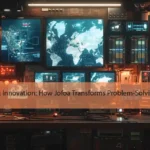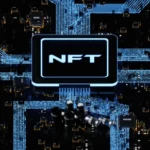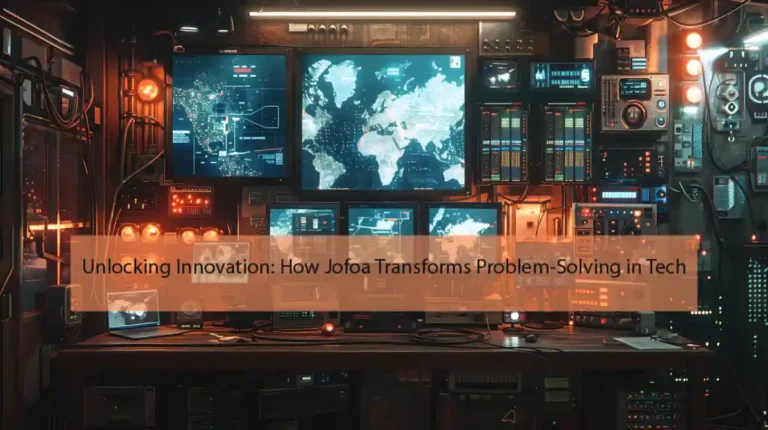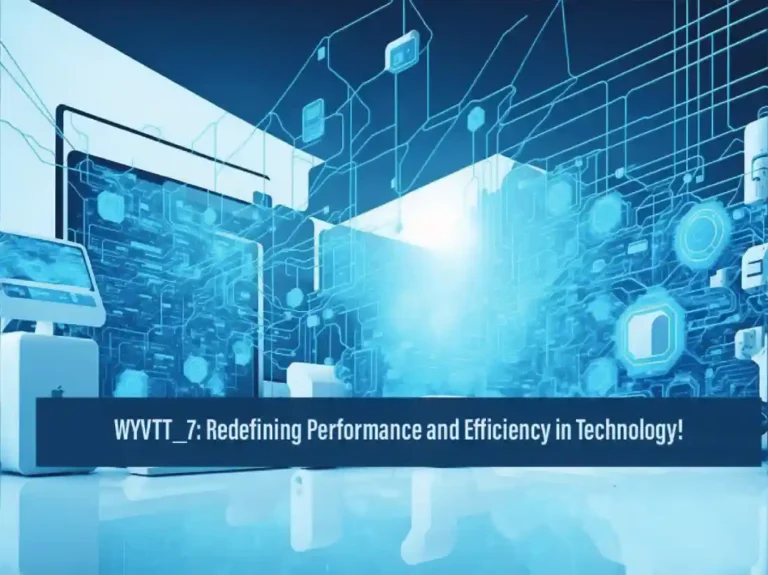Master the art of entity recognition in Doxfore5 Python code with specialized tools. Here we have a complete guide for mastering entity recognition techniques.
Table of Contents
Introduction to Entity Recognition (Doxfore5 Python code)
Entity Recognition or Named Entity Recognition (NER) is one of the key sub-tasks in natural language processing (NLP). It often entails the process of assigning attributes such as persons, organization, location, and date among others to pieces of information in a text. However, the essence of NER is the conversion of raw text into machine-readable form, which is easily exploitable and more relevant for analysis in different tasks.
That is why NER is an essential component when it comes to information extraction of text data. Regarding data access, it is an aid because the systems can locate and mine information effectively. In question-answering systems, NER is useful when determining the entities in the question so that better responses can be given. For example, identifying the entity “Barack Obama” in a question enables the system to comprehend that it is faced with a question about an individual – more specifically, the former President of the United States. In the same way, in data mining, NER helps to find out patterns and relations in the data, thus affecting the formation of better analyses.
Some of the application areas of NER include making search engines smarter and more optimized, implementing smart customer service support of chatbots, sentiment analysis, Legal Document Processing where it is imperative to identify entities like date, location, or name, and many others. The application of NER is not limited to the mentioned areas only and has an impact on a variety of fields, so it is considered useful in the area of NLP.
Before discussing the specifics of the introduced Doxfore5 Python code library more extensive knowledge of the Entity Recognition techniques is useful. This particular code in the Python programming language is formulated to make NER easy to implement with strong and flexible functions perfect for both entry-level and expert developers. The importance of the library is proved by the capability of solving various NLP tasks with high accuracy, thus it becomes useful for each person who is ready to explore entity recognition.

Getting Started with Doxfore5 Python Code
Before you go further, you need to make sure that your environment of Doxfore5 Python code is prepared sufficiently. The Doxfore5 library may only be used with Python 3. 7 and Python 3. 8, higher versions of Python. Now, be sure, you have the correct version of Python on your machine and check this by executing the command, python — version in the terminal.
The next thing that needs to be done to design the Doxfore5 library is to correctly install the appropriate Python version. This is possible through pip, a package installer in Python. Open your terminal and execute the following command: Open your terminal and execute the following command:
pip install doxfore5
Upon installing the library, the next course of action is to use it in your Python project, here’s how to do it. Below is the basic project structure and code snippet to get you started with Doxfore5 for entity recognition: Below is the basic project structure and code snippet to get you started with Doxfore5 for entity recognition:
project_folder/
|– main. py
|– requirements. txt
In your main. py file, include the following lines to import the necessary libraries and set up a simple entity recognition task: In your main. py file, include the following lines to import the necessary libraries and set up a simple entity recognition task:
import doxfore5
># Set up the Doxfore5 entity recognizer
recognizer = doxfore5. EntityRecognizer()
Sample text for entity recognition #
sample_text = “Apple Inc is a technology giant company based in America especially in California, in the city of Cupertino. ”
# Perform entity recognition
entities = recognizer. recognize_entities(sample_text)
># Statement about the entities that have been recognized
for entity in entities:
print(f”Entity: {entity. text}, Type: {entity. label_}”)
The following instance shows the simplest use of the Doxfore5 Python code for the entity detection of a text. The recognizer. recognize_entities() function handles the input text and returns a list of entities along with their type. It also proved possible by selecting the recognized entity and iterating through it to print its details.
Make sure that the dependencies used in the script are included in the requirements. txt, whenever you want to recreate the environment. This file is generated using the command pip freeze > requirements. txt
By following these steps, you should have the Doxfore5 library functional in your Python environment thus providing direction to advanced entity recognition.
Advanced Techniques in Entity Recognition with Doxfore5 Python code
Entity recognition which is a subset of elements in natural language processing helps in the detection and categorization of certain objects in a given text. Doxfore5 improves this process with several sophisticated methods; these are methods that have been developed based on the requirements of a given scenario. In this part of the research, we focus on rule-based reasoning, machine learning, and deep learning and use the general framework to present the details of their application and performance.
Rule-Based Approaches: They use specific formulas and precalculated reference points to find the entities. Doxfore5 offers a great extent of rule-based configuration paradigms and enables users to define them with simple forms of regular expressions and lists of keywords. For example:
import doxfore5text = “John Doe works at Acme Corp. “rules = { “PERSON”: rule PERSON = r”[John Doe” rule ORG = r”[Acme Corp” entities = doxfore5. recognize(text, rules)print(entities)# Output: {‘PERSON’: [‘John Doe’], ‘ORG’: [‘Acme Corp’]}
Nonetheless, rule-based approaches, though explicit and easily explicatable, can be rigid and perform poorly when encountering Innovation in texts.
Machine Learning Models: Other models like CRFs and SVMs are more flexible because they can adjust selected parameters like the depth of the decision tree. Doxfore5 uses all the presented models to train with annotated datasets and thereby increase the recognition accuracy. Here’s a sample implementation using a CRF model: Here’s a sample implementation using a CRF model:
from doxfore5 import CRFModelcrf_model = CRFModel()crf_model. train(training_data)text = “Alice is attending MIT. “entities = crf_model. predict(text)print(entities)# Output: Thus, there are {‘PERSON’: [‘Alice’], ‘ORG’: [‘MIT’]} of the extraction from the corpus.
These models generalize better compared to rule-based systems, however, they need a large amount of labeled data and computational power.
Deep Learning Techniques: Doxfore5 also includes other complex deep learning approaches such as Bi-LSTM and Transformer-based models. These techniques tend to model the relationships or trends within data, which presents added efficiency compared to other techniques when working with big data. Consider this example using a Bi-LSTM model: Consider this example using a Bi-LSTM model:
from doxfore5 import BiLSTMModelbilstm_model = BiLSTMModel()bilstm_model. train(training_data)text = “Elon Musk founded SpaceX. “entities = bilstm_model. predict(text)print(entities)# Output: PERSON = [Elon Musk] ORG = [SpaceX]
These models are very accurate but are computationally heavy and have a lot of hyperparameters to tweak.
The last consideration of the choice depends on the complexity of the data, the available resources, and the particular needs. Thus, Doxfore5’s ability to accommodate different approaches enhances it as a tool for mastering entity recognition in different contexts.
Evaluating and Optimizing Entity Recognition Models (Doxfore5 Python code)
It is necessary to compare Newly developed NER models to determine their efficiency and also to establish some challenges faced. There is a variety of primary metrics, consisting of precision, recall, and the F1-score, to assess the NER models’ performance. Accuracy is used in classifying the entities and it focuses on the small percentage of entities correctly classified to the total percentage of entities predicted correctly while recall is used in establishing the percentage of entities classified out of the actual percentage of entities that are present. The F1-score is the average of the precision and the recall, giving equal importance to both of them.
Some of the findings have been highlighted where using Doxfore5 Python code one can assess NER models. For instance, to calculate precision, recall, and F1-score, one can use the following code snippet: For instance, to calculate precision, recall, and F1-score, one can use the following code snippet:
from doxfore5 import evaluate_model
precision, recall, f1_score = joblib. load(evaluate_model, predictions, ground_truth)
print(precision: Precision: {precision}, Recall: {recall}, F1-score: {f1_score}
From these results, we can get an understanding of where the model predicts pretty well and where it struggles to do so. For instance, high precision, and low recall mean that the model is cautious and often overlooks real entities’ existence. On the other hand, both traits low recall and high precision depict a model that is overly generous and ends up providing many false positives.
There are some ways to work on NER models for better performance: Parameter tuning is the process whereby certain characteristics such as learning rate, batch size, and the number of passes through the training data, are set at their most appropriate values. Additional techniques include data augmentation, in which synthetic data is added to the data set or samples of rare entities are repeated.
However, common issues remain the same from the mentioned strategies above. Misclassification is common due to issues such as ambiguity in language, where an item that was classified under one category may easily belong to another category; overlapping which means the entities belonging to different domains can be grouped under a particular category; and domain-specific jargon which involves using terminology familiar to a certain domain or discipline, which may cause items to be grouped under the wrong category. To avoid these issues, text data should be preprocessed, for instance, normalized and using context-aware word embeddings; better yet, it calls for the continual evaluation and refinement of the model.
Consequently, such an evaluation based on Doxfore5 Python code in addition to several optimization measures can enhance the capability of entity recognition models increasing the degree of correct recognition in numerous application fields.
Conclusion
It is essential to understand and implement entity recognition methods when dealing with extracting information from textual data; nevertheless, it is less challenging with the help of the Doxfore5 Python code. In this blog post, we have introduced and illustrated the methodologies that are in Named Entity Recognition (NER), as well as discussing Doxfore5 Python code and its practicality.
Thus, the Doxfore5 Python code’s library is exceptional considering the strong algorithms of the library and the efficient way in which even beginners as well as professional developers can easily use the entity recognition part of the library. Thus, using the Features of Doxfore5, users can extract entities with a high level of efficiency, which will improve the efficiency of data analysis and enable a better understanding of the textual content.
We have also looked into practices that can be used to enhance NER operations such as pre-processing techniques, training, and assessing of models as well as forms of evaluation. These are critical processes for the effectiveness and efficiency of the entity recognition models for the particular entropy. Therefore, the examples of commands and programming codes shared give a stem to those wishing to equip their projects with Doxfore5.
All in all, when having all the necessary tools and methods at the company’s disposal, the opportunities for gaining a lot of valuable data from unstructured text are virtually limitless. The Doxfore5 Python code, which is packed with features as seen above, actually gives the user the leverage to do this at her/his convenience.
Finally, it is necessary to mention that the field of Named Entity Recognition is still active, and one has to monitor the new developments regularly. Moreover, further improvements can be made to NER itself as well as the researchers can always stay informed about the latest patents and the improvements that took place in the field of NER.
FAQs aboutDoxfore5 Python code
What are the prerequisites for using Doxfore5?
The proposed Doxfore5 is easy to integrate into your project for the uses described above, however, the users should have at least basic Python programming and a literal understanding of natural language processing (NLP). Knowledge about libraries such as NLTK, SpaCy, or TensorFlow might be an asset. Also, you need to have Python 3. 6 or later installed, and the dependencies described in the Doxfore5 documentation.
How can I improve the accuracy of my NER model?
The following steps can be taken to refine your NER model concerning the named entity recognition involving Doxfore5 Python code. To do this, guarantee the training data set is clean and well-labeled. Secondly, one can rely on the pre-trained models and then further train them on the given data and use them. Hyperparameter tuning and using a larger amount of training data is also beneficial for the model’s accuracy; transfer learning, in particular, boosts the performance to an even higher level. .
What are some common applications of entity recognition?
The use of entity recognition is vast to solve problems in different fields. For instance, it can be employed in the healthcare domain where clinical notes are used to extract patient data. In finance, it helps in the determination of details of a transaction as well as the different financial entities in reports.










